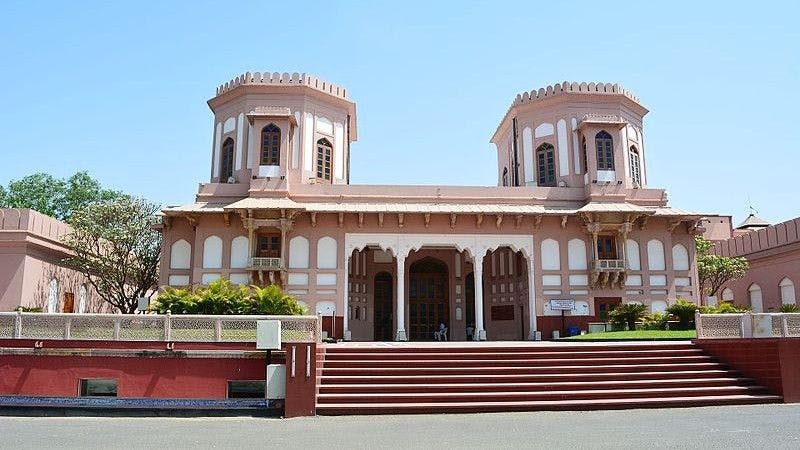Ahmedabad’s ‘Shahi’ Baug
BOOKMARK
It's a neighbourhood where you will find the well-heeled. But there is more to the posh address of Shahibaug in Ahmedabad, where a lot of the city’s old rich lived. This area, named after the grand baug or garden, and palace here that the Mughal Prince, Khurram, built as Viceroy of Gujarat, before he became Emperor Shah Jahan, saw a resurrection in the late 1900s.
It truly marks the story of shifting fortunes in India’s heritage city Ahmedabad.
In 1573, Akbar had captured Gujarat by defeating the ruler of the Gujarat Sultanate Muzaffar Shah III. In 1618, Prince Khurram (Shah Jahan) was appointed the region’s viceroy and he undertook the building of a palace on the outskirts of Ahmedabad to boost ‘employment opportunities’ of his subjects. Big building work was often embarked upon, at times of scarcity and turmoil, through history.
Khurram’s Shahibaug consisted of a royal garden, a traditional Mughal charbaug or quadrilateral garden with a well and multiple fountains, watering some of the most exquisite varieties of trees. It was completed in 1622.
After the Mughal era, Shahibaug lay deserted until the British came in and used it as a cantonment to house the senior officials. In fact, when Satyendranath Tagore was the Commissioner of Ahmedabad City in 1878, his younger brother the famous poet Rabindranath Tagore, all of 17 yrs at that time, came to stay with him at Shahibaug. It was here that Tagore is said to have written some of the pages of his popular Bengali short story 'Khudito Pashan’ (Hungry Stone).
The late 19th century saw a resurrection of Shahibaug. The trigger was the attempt by a clutch of Gujarati businessmen to establish factories and mills in the city. As these Sheths started making fortunes, they started looking for housing alternatives to move out of the crowded pols of Ahmedabad. The Shahibaug, outside the main city walls, offered the perfect ambience for their changing and fast expanding lifestyles. One after the other, they started building lavish bungalows in the architectural style of the old royals of Gujarat and Saurashtra.
One of the most prominent among them was Ambalal Sarabhai, the founder of Calico Textile Mills and Sarabhai Textiles (among other businesses). The use of modern machinery and techniques he imported after his frequent trips to Lancashire made Calico a pioneer in the production of fine cloth and also Sarabhai, a very wealthy man. In 1904, he built a 21 acre home called ‘The Retreat’ in Shahibaug. Today, the house has been converted into one of the foremost textile museums in India, The Calico Museum of Textiles.
Then was the mansion named ‘Lalbaug’ built in 1905 which belonged to industrialist Lalbhai Dalpatbhai who laid the foundation of the present-day Lalbhai group of Industries - the owner of the well-known textile major Arvind Mills. The family lived here till 1998. Today ‘Lalbaug’ has also been converted into a museum showcasing the history of Indian art.
Another illustrious family which lived here were the Parsi Vakils. Cowasjee Vakil made the bricks, with which much of old Ahmedabad had been built!
After independence, from 1960 to 1978, the Shahibaug became the official residence of the Governor of Gujarat and today the building renamed Moti Shahi Mahal, has been transformed into a national memorial dedicated to Sardar Vallabhbhai Patel.
While little of the original charbaug remains, spring is a good time to watch the flowers bloom in the vast gardens here… and walk down its historic paths.
– ABOUT LIVE HISTORY










